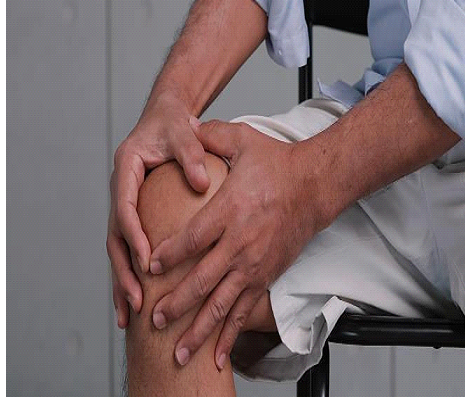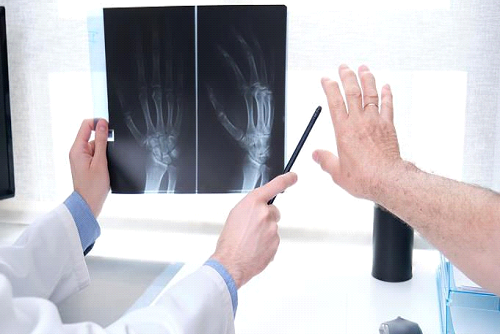
 Data Structure
Data Structure Networking
Networking RDBMS
RDBMS Operating System
Operating System Java
Java MS Excel
MS Excel iOS
iOS HTML
HTML CSS
CSS Android
Android Python
Python C Programming
C Programming C++
C++ C#
C# MongoDB
MongoDB MySQL
MySQL Javascript
Javascript PHP
PHPPhysics
Chemistry
Biology
Mathematics
English
Economics
Psychology
Social Studies
Fashion Studies
Legal Studies
- Selected Reading
- UPSC IAS Exams Notes
- Developer's Best Practices
- Questions and Answers
- Effective Resume Writing
- HR Interview Questions
- Computer Glossary
- Who is Who
What is the full form of DJD?
Overview
Degenerative Joint Disease (DJD), or Osteoarthritis, is a chronic condition that essentially influences the joints, causing pain, stiffness, and restricted versatility. It happens due to the wear and tear of the cartilage that pads the joints, driving to bone- to-bone contact and damage. Osteoarthritis ordinarily creates slowly over time and can affect any joint in the body, but is most commonly seen in the hands, knees, hips, and spine.

Risk components for the development of this condition incorporate ageing, obesity, joint injuries, and genetic components. Treatment options include lifestyle modifications, pain management, physical treatment, and in serious extreme cases, surgery.
Causes
The precise causes of Degenerative Joint Disease or Osteoarthritis are not completely understood, but a few components are known to contribute to its development, including
Age − As we age, the cartilage in our joints can wear down over time, driving to osteoarthritis.
Obesity − Being overweight or obese puts extra weight on the joints, particularly the knees and hips, increasing the chance of osteoarthritis.
Joint injuries − A history of joint injuries or overuse can increase the probability of developing osteoarthritis later in life.
Genetics − There may be a hereditary component to osteoarthritis, because it tends to run in families.
Other medical conditions − Certain medical conditions, such as rheumatoid joint pain, can also increment the risk of developing osteoarthritis.
Symptoms
Symptoms of Degenerative Joint Disease or Osteoarthritis can change depending on the seriousness and location of the joint affected, but a few common signs and side effects include −
Pain − The affected joint may feel sore or hardened, particularly after periods of inactivity or overuse.
Swelling − The joint may end up swollen, particularly after amplified periods of use or activity.
Limited range of motion − The affected joint may become stiff and difficult to move, which can affect versatility and daily exercises.
Cracking or popping sounds − Development of the affected joint may produce a crackling or popping sound, known as crepitus.
Bony growths − Over time, bony growths called bone spurs may create around the affected joint.
Tenderness − The affected joint may be delicate to the touch.
Symptoms of osteoarthritis can create gradually over time and may worsen as the condition advances. It is important to seek medical attention if you experience determined joint pain or stiffness.
Treatment
Here are some common treatment options −
Lifestyle modifications − Weight loss, work out, and physical treatment can help decrease the stress on the affected joints, increase mobility, and progress generally function.
Pain management − Over-the-counter pain relievers, such as acetaminophen or nonsteroidal anti-inflammatory drugs (NSAIDs), can help manage pain and inflammation.
Corticosteroid injections − Injections of corticosteroids can give short-term relief of pain and inflammation in the affected joint.
Hyaluronic acid injections − Injection of hyaluronic acid, a substance found in normal joint fluid, can help decrease pain and progress joint function in a few patients.
Surgery − In extreme cases, joint substitution surgery may be essential, particularly if other treatments have failed to supply relief.
Assistive devices − The utilisation of braces, canes, or other assistive devices can help decrease stretch on the influenced joint and improve mobility.

The treatment of Degenerative Joint Disease or Osteoarthritis typically includes a combination of lifestyle modifications, pain management, and, in extreme cases, surgery. It is critical to work with a healthcare professional to decide the best course of treatment for your individual needs.
Conclusion
Degenerative Joint Disease, or Osteoarthritis, is a chronic condition that affects millions of people around the world, especially older adults. Whereas the exact causes are not completely caught on, several factors are known to contribute to its development, including ageing, obesity, joint injuries, and genetics. Symptoms can change but regularly incorporate pain, stiffness, and restricted mobility in the affected joint. Treatment alternatives incorporate lifestyle alterations, pain management, physical therapy, and, in severe cases, surgery. It is imperative to work with a healthcare professional to decide the finest course of treatment for your individual needs and to manage symptoms effectively to progress in general quality of life.
FAQs
Q1. What are the possible causes of osteoarthritis?
Ans: Ageing, obesity, joint injuries, genetics, and specific medical diseases are risk factors for the onset of osteoarthritis.
Q2. What joints are most frequently impacted by osteoarthritis?
Ans: Any joint in the body can develop osteoarthritis, although the hands, knees, hips, and spine are the most frequently affected.
Q3. Exactly how is osteoarthritis identified?
Ans: The usual methods for diagnosing osteoarthritis include symptoms, physical examination,and imaging tests like X-rays or MRI.

